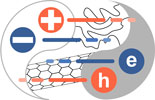3D Printing Mixed Conducting Polymers
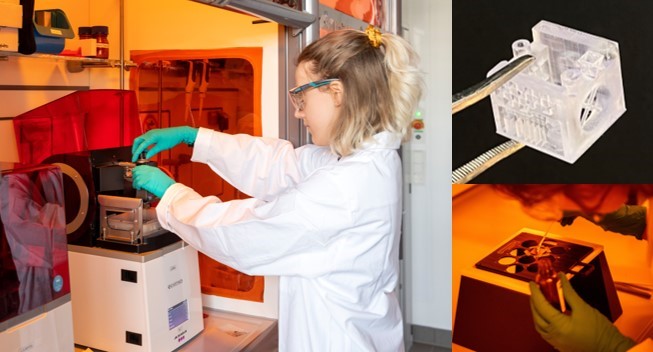
This project requires a background in organic (and polymer) chemistry and materials science. It involves synthesis and characterization of functional polymers as well as light-based 3D printing and microscopy techniques. Experience with 3D modelling is advantageous.
New Photocrosslinkable Polymer Architectures with Mixed Ion-Electronic Transport
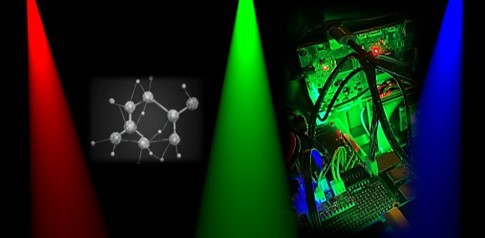
This project requires a background in organic (and polymer) chemistry and materials science. It involves polymer synthesis, light irradiation set-ups and advanced characterization techniques.
- Main Advisor: Prof. Dr. Eva Blasco
- Research Group Website:https://www.imseam.uni-heidelberg.de/blasco
- Location/Institute:Heidelberg University, Institute of Molecular Systems Engineering and Advanced Materials (IMSEAM), Im Neuenheimer Feld 225, Heidelberg
Systematically microengineered conductive hydrogels

This project requires a background in materials science, polymer chemistry or similar. It involves direct laser writing in a cleanroom, electrospinning in a chemistry lab, electrical characterization, and microscopy techniques.
- Main Advisor: Prof. Dr. Christine Selhuber-Unkel
- Research Group Website:https://www.imseam.uni-heidelberg.de/selhuber
- Location/Institute:Heidelberg University, Institute of Molecular Systems Engineering and Advanced Materials (IMSEAM), Im Neuenheimer Feld 225, Heidelberg
Porous Molecules and Polymers for Highly Selective Cation and Anion Binding for Sensing and Transport
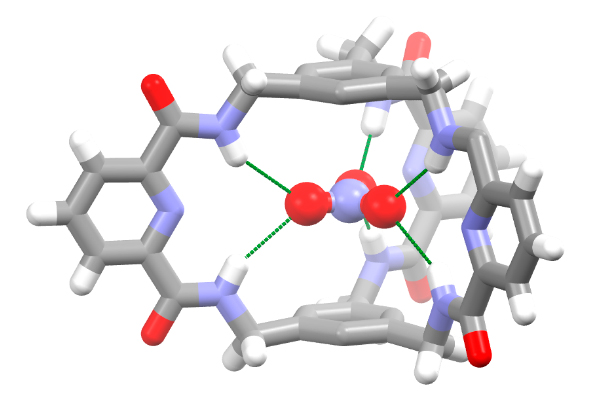
We will synthesize derivatives of shape-persistent organic cages to create new materials for sensing applications of various anions and cations. For example, the cages will be combined with semiconducting polymers to fabricate electrochemical transistors (ECTs).
This project requires a background in synthetic organic chemistry and/or supramolecular chemistry.
- Main Advisor: Prof. Dr. Michael Mastalerz
- Research Group Website:https://www.uni-heidelberg.de/fakultaeten/chemgeo/oci/mastalerz/index.html
- Location/Institute:Heidelberg University, Institute for Organic Chemistry, Im Neuenheimer Feld 270, Heidelberg
From Advanced Electrochemistry of Tailor-Made Mixed Conducting Polymer Films to Actuating Devices
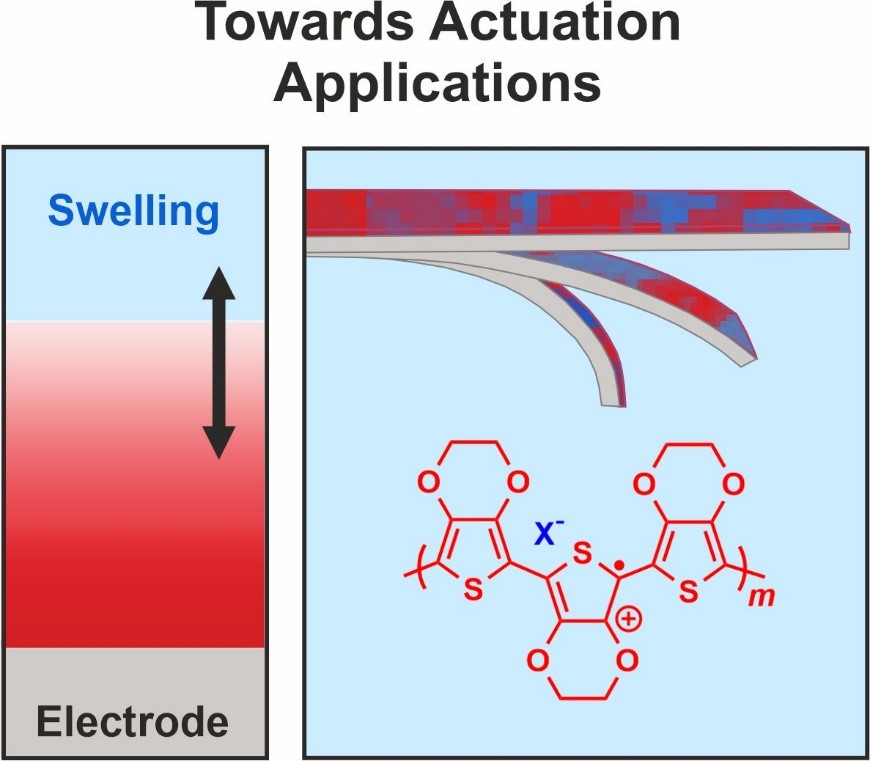
(1) In-situ Electrochemistry for Actuation: This project will focus on gaining a fundamental understanding of the properties of mixed conducting polymer films using in-situ electrochemical experiments (e.g. in-situ UV-vis, ellipsometry, rheology). Here the main question is how the combination of morphology, doping state and choice of ions affects the films in terms of swelling and reversible switching. For actuator applications high swelling degrees will be targeted. Stimuli will include humidity and electrical fields.
(2) Mixed Conducting Polymer Architectures: A second project will focus on synthetic and film morphology aspects. Here electropolymerization and synthetic post-polymerization strategies such as click chemistry will be pursued. The creation of tailor-made conducting polymer network films will help to develop novel architectures for actuating electrochemical films and devices.
For both projects a chemistry, nano and materials science or physics background is beneficial. The work will involve polymer science, advanced electrochemistry techniques, and morphology and polymer electronics device characterization in a highly interdisciplinary research environment.
- Main Advisor: Prof. Sabine Ludwigs
- Research Group Website:https://www.ipoc.uni-stuttgart.de/fp/ & https://www.simtech.uni-stuttgart.de/FSM/
- Location/Institute:University of Stuttgart, IPOC – Functional Polymers, Institute of Polymer Chemistry (IPOC), Pfaffenwaldring 55, 70569 Stuttgart
Ion and Charge Transport in Nanostructured and Porous SWNT/Polymer-Hybrids for Sensors and Actuators
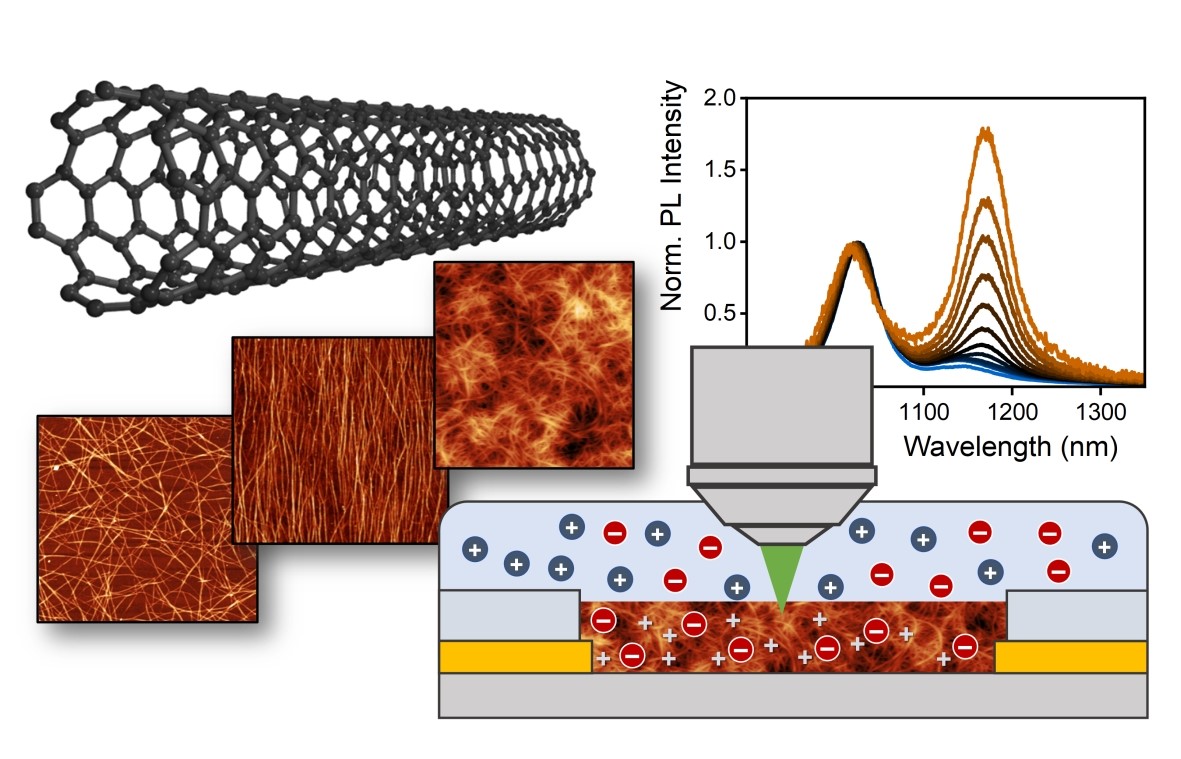
This project requires a background in physical chemistry, nano- or materials science or experimental physics. It involves solution-based material processing, device fabrication in a cleanroom, electrical characterization, advanced spectroscopy and microscopy techniques.
- Main Advisor: Prof. Dr. Jana Zaumseil
- Research Group Website:https://www.pci.uni-heidelberg.de/apc/zaumseil/
- Location/Institute:Heidelberg University, Institute for Physical Chemistry, Im Neuenheimer Feld 253, Heidelberg
Advanced Spectroscopies of Local Electronic-Ionic Dynamics in Energy Storage Materials
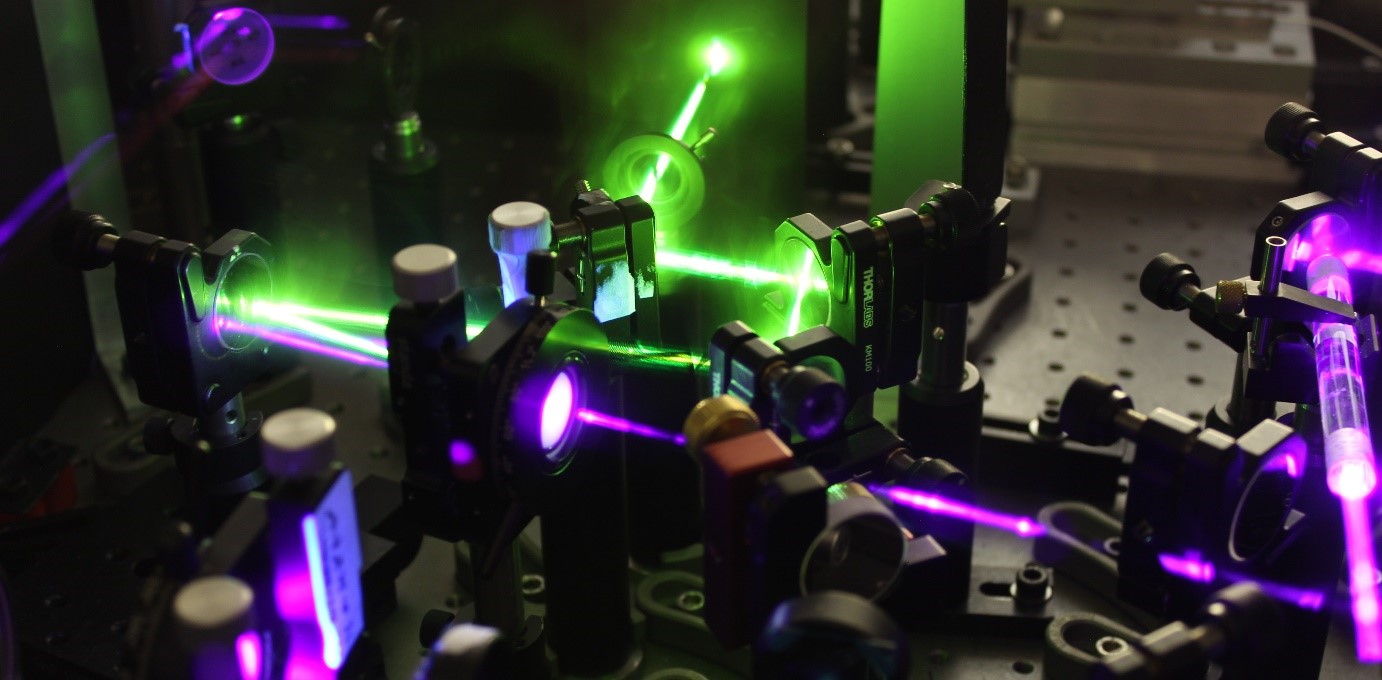
Effects of local environment on charge-ion conversion in hybrid nanostructures
You will use a commercial near-field microscope to reveal the local dielectric function and charging state on sub-100 nm length scales for insights into charging processes at domain boundaries and interfaces of energy materials.
Ultrafast charging dynamics in hybrid battery materials
You will focus on detection of charge conversion and redox processes from ultrafast dynamic of the dielectric function. You will advance concepts for phase-resolved spectroscopies to achieve the sensitivity and time-resolution needed to gain insights into the dynamics of charge storage materials
These projects require a background in physical chemistry, experimental physics or material science. Experience with optical spectroscopy, semiconductors or electro-chemistry is of benefit.
- Main Advisor: Prof. Dr. Felix Deschler
- Research Group Website:www.uni-heidelberg.de/fakultaeten/chemgeo/pci/deschler/
- Location/Institute:Heidelberg University, Institute for Physical Chemistry, Im Neuenheimer Feld 229, Heidelberg
Magnetic probes to study photoactivated processes in mixed ionic-electronic conductors
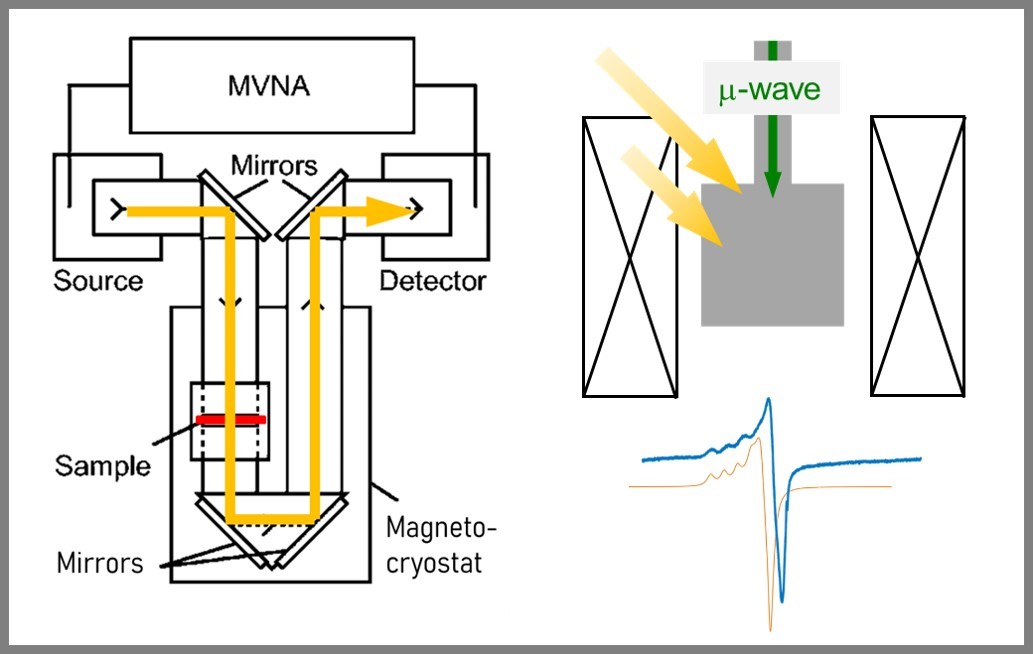
This project requires a background in experimental physics with a focus on condensed matter physics and materials properties. Experience in characterising magnetic materials and in magnetic spectroscopy is of advantage.
- Main Advisor: Prof. Dr. Rüdiger Klingeler
- Research Group Website:https://www.kip.uni-heidelberg.de/cmm/
- Location/Institute:Kirchhoff Institute for Physics, INF 227, Heidelberg University
Mechanisms and applications of ion and dopant motion in organic semiconductors
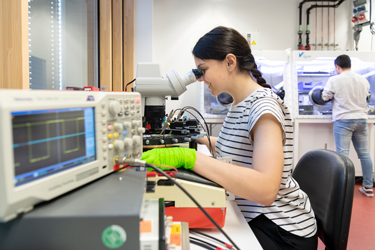
Apart from being embedded in the Research Training Group on mixed ionic-electronic transport, the candidate will work in a small team that studies doped organic semiconductors using experimental, numerical and theoretical methods
This project involves device fabrication in a cleanroom, advanced electrical characterization and numerical modelling and therefore requires a background in experimental physics or equivalent. Previous experience in a relevant research topic is not essential but desirable.
- Main Advisor: Prof. Dr. Ir. Martijn Kemerink
- Research Group Website:https://www.imseam.uni-heidelberg.de/kemerink
- Location/Institute:Heidelberg University, Institute for Molecular Systems Engineering and Advanced Materials (IMSEAM), Im Neuenheimer Feld 225, D-69120 Heidelberg.
Influence of Ionic and Electronic Transport on the Rheology of Shape Changing Polymeric Materials
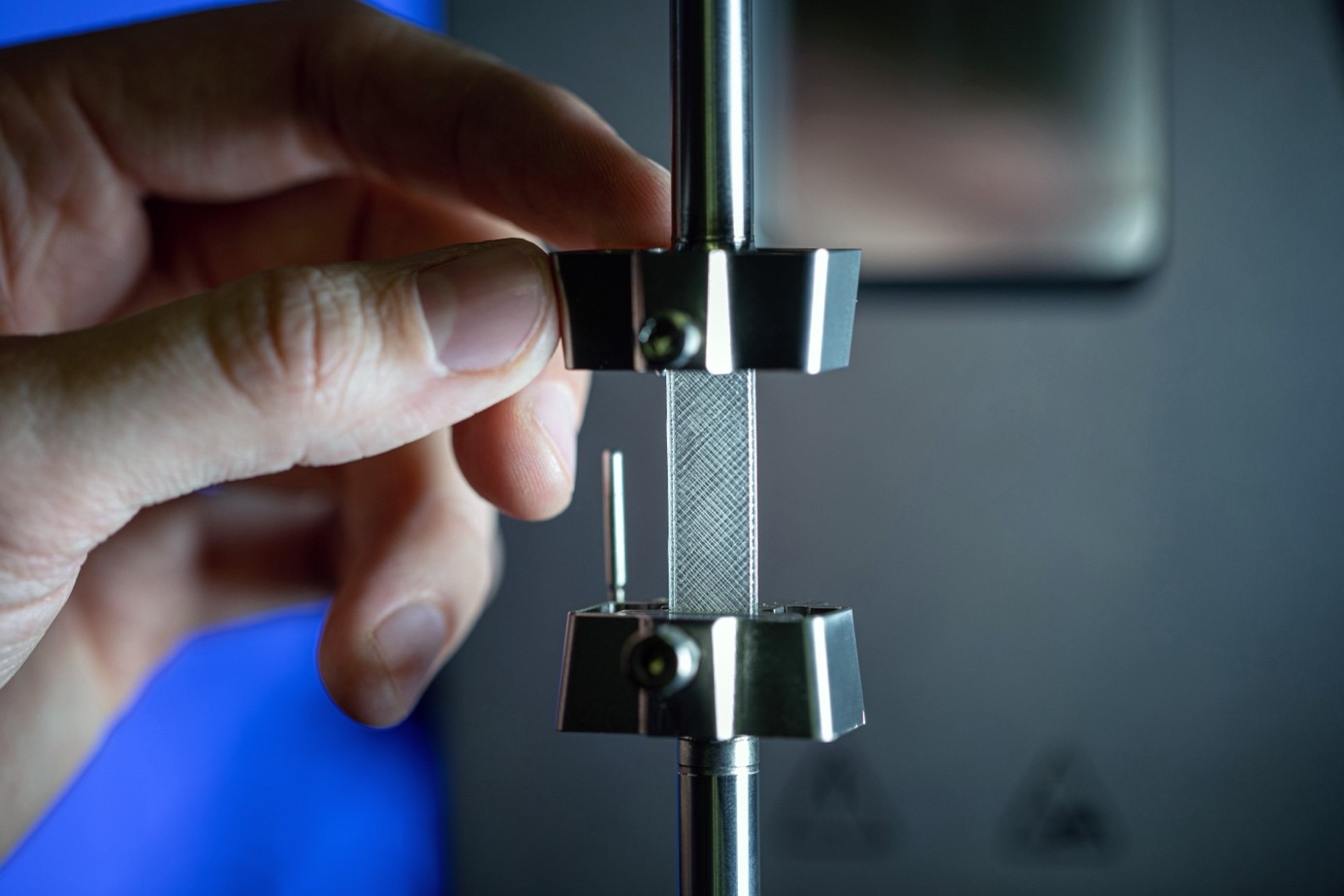
- Main Advisor: Prof. Dr.-Ing. Holger Steeb
- Research Group Website:https://www.mib.uni-stuttgart.de/cont/
- Location/Institute:University of Stuttgart, Institute of Applied Mechanics (MIB), Pfaffenwaldring 7, D-70569 Stuttgart
Molecular modelling of adsorption and transport in swelling, semiconducting porous materials: from ab-initio to coarse-grained simulations
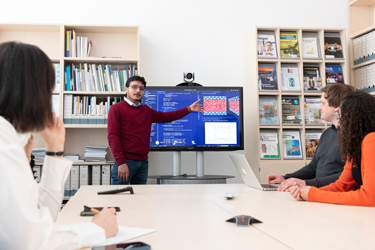
This project requires a strong background in soft matter simulations, statistical mechanics and thermodynamics. Knowledge of quantum chemistry is encouraged, further background in physical chemistry and machine learning is helpful. The position involves participation in the development of employed software tools like MAICoS1 and ESPResSo2 , thus programming skills in typical languages (Python, C++, …) are beneficial.
Fluctuating hybrid electrokinetic/hydrodynamic description of mixed electronic/ionic transport
The concept of charge carrier hopping is a long-established tool in solid state physics and is successfully applied to transport in semiconductors or to explain transport in solar cells. In the case where an electrolyte solution is in contact with a semiconductor, the dynamics of both the mobile ionic species as well as of electrons and holes is strongly coupled. The aim of this theoretical project is to develop a coupling method that describes simultaneously the coupled ionic/electronic transport based on kinetic Monte Carlo and Molecular Dynamics simulations. On the microscopic site this will be benchmarked against ab-initio simulations whereas mesoscopic properties shall be derived by embedding the transport behaviour in a continuum description. The project involves active exchange with other groups in the GRK and especially with Martijn Kemerink. A longer research stay in Heidelberg is thus planned.
This project benefits from a solid background in solid state physics, simulation approaches, and statistical mechanics. Familiarity with quantum chemistry calculations and programming in common languages such as Python or C++ are advantageous since participation in the development of employed software tools like MAICoS1 and ESPResSo2 is expected.
1) https://www.maicos-analysis.org/
2) https://espressomd.org/
- Main Advisor: Dr. Alexander Schlaich
- Research Group Website:https://www.simtech.uni-stuttgart.de/exc/research/junior-research-groups/multiscale-materials-modeling/
- Location/Institute:University of Stuttgart, Stuttgart Center for Simulation Science (SC SimTech), Universitätsstraße 32, 70569 Stuttgart
